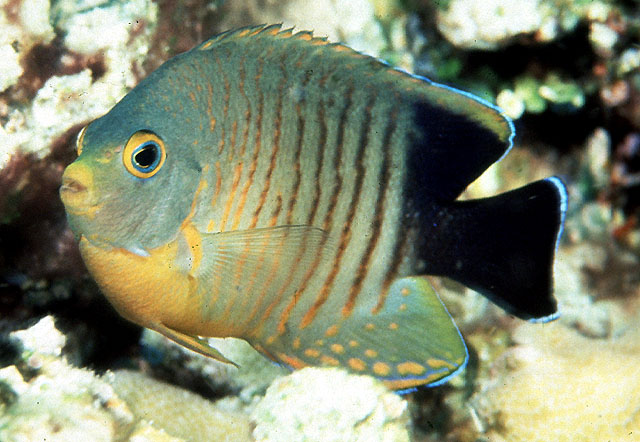| Pomacanthidae (Angelfishes) |
| 15 cm TL (male/unsexed) |
|
reef-associated; marine; depth range 3 - 30 m, non-migratory |
| Eastern Indian Ocean: Sri Lanka to Western Australia, including Indonesia and the Andaman Is. |
|
Dorsal spines (total): 14-14; Dorsal soft rays (total): 14-16; Anal spines: 3-3; Anal soft rays: 15-17. Description: Overall color is white with narrow wavy golden brown vertical stripes on the sides. Chest, base of the pectoral fin, and the outline of the operculum orange or golden brown. Caudal fin and the adjacent posterior portion of the dorsal fin black with submarginal narrow whitish blue band (Ref. 4859). Body depth 1.7-1.8 in SL. Scales longitudinal series 48 (Ref. 90102). |
| Inhabits rocky areas of seaward reefs as well as rich coral areas (Ref. 9710). Feeds on algae; forms harems of 3-7 individuals. Frequently exported through the aquarium trade. Forms hybrids with Centropyge vrolikii in areas where these 2 species are sympatric, and hybrids with the C. flavissima have been recorded in the Christmas I. and Cocos-Keeling islands in the eastern Indian Ocean. Mimicked by the juveniles of the acanthurid Acanthurus tristis (Ref. 48391). |
|
Least Concern (LC); Date assessed: 09 October 2009 Ref. (130435)
|
| harmless |
Source and more info: www.fishbase.org. For personal, classroom, and other internal use only. Not for publication.

